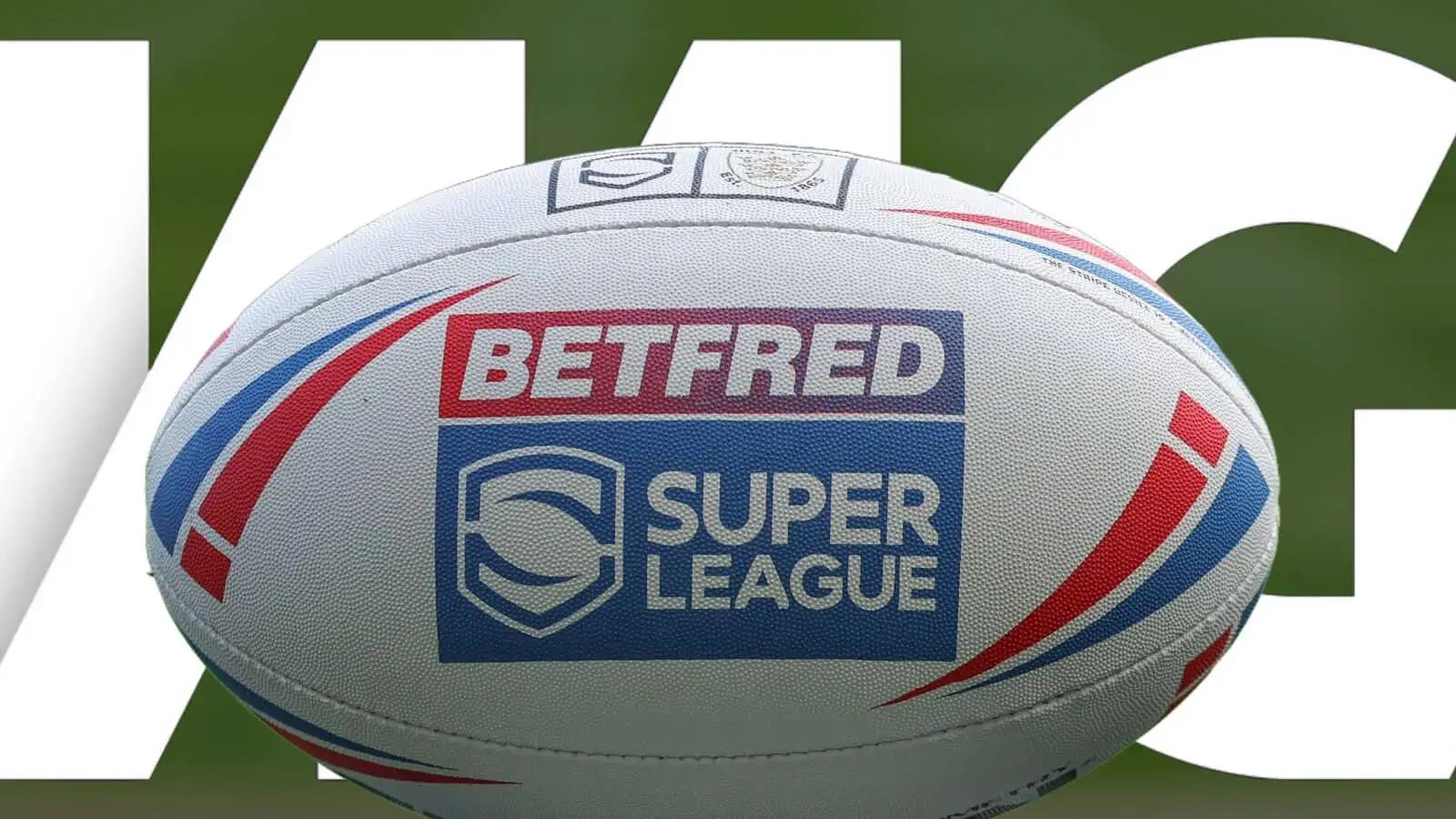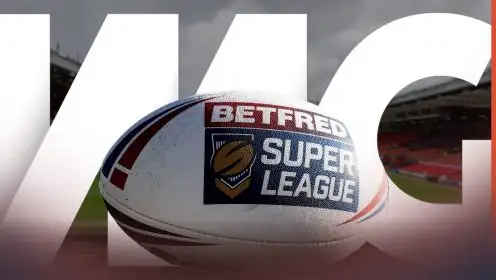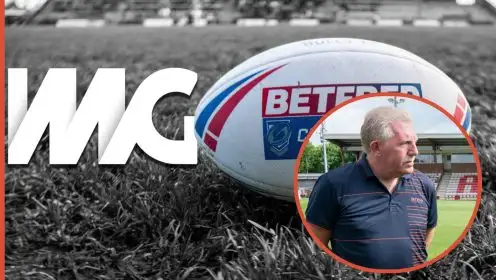What to expect from key IMG meeting on Super League future

Photo: Alex Whitehead/SWpix
It’s been a long time coming, but clubs are set to finally find out the criteria that will ultimately determine their future from 2025 and beyond.
Representatives of all 36 clubs in Super League, Championship and League 1 are currently meeting in Huddersfield, where they are being presented with the finer details of IMG’s re-imagining rugby league proposals.
This will provide much greater clarity on what is likely to happen and what will be expected of clubs ahead of what will likely be a busy 2024 of assessing the current state of play.
What has happened so far with the IMG revolution?
Back in September, IMG revealed a return a form of licensing, but crucially retaining an element of promotion and relegation, a major difference to the previous licensing era.
Clubs would be alloted a grade – A, B or C – based on a number of criteria, which is the key detail that everyone has keenly been waiting for in the five months since.
The headline detail from the initial announcement was that category A clubs would effectively be exempt from relegation, and that eventually, Super League would comprise completely of category A clubs.
The summary recommendations from their initial report were:
- – A re-positioned calendar which optimises flow, narrative and engagement, incorporating regular ‘peaks’ of interest and a compelling season climax.
- – A calendar aligned with the global game to facilitate an international window in October and incorporate a mid-season international.
- – Participation in the top tier to be based on a range of on and off field measures, delivered through a club grading system with the aim of supporting financial sustainability and encouraging investment into clubs. ‘Category A’ clubs will be guaranteed participation in the top tier whilst ‘Category B’ clubs will be re-assessed annually with the highest-ranking clubs occupying the remaining slots in the top tier.
- – Promotion and relegation will continue on the field of play between the second and third tiers with tier two increasingly filled with strong Category B Clubs.
- – An expansion strategy to be developed that targets and supports the growth of the Women’s and Girls’ game, and also growth in new markets.
- – Participation of clubs outside of the UK to be capped and with additional standards to support domestic growth.
- – Operations to be centralised where this can maximise efficiencies and drive incremental revenue (e.g. ticketing and digital infrastructure).
- – A new brand strategy to be introduced and aligned with the above commercial strategy.
MORE: IMG recommends return to licensing for Super League
What is expected to be part of the criteria?
There will no doubt be elements from the previous licensing era that come in to play in this one.
Back in 2008, clubs were judged on a range of categories including facilities, attendances, finances, player strength, salary cap and geographical expansion.
That included things such as a stadium capacity of more than 12,000, and if it met modern day standards. Clubs earned points for a turnover of more than £4m a year, and if they were outside a 20-mile radius of another Super League club.
There is thought to be some much finer detail as part of the IMG process, which may consider whether a club owns or has primary tenure of its stadium.
There has been speculation that inclusion may form a part too, with possible criteria around women’s and wheelchair teams, following the success of last year’s World Cup.
While there has been some discussion at meetings regarding the criteria, some clubs have expressed frustration at the lack of clarity and the time it has taken to confirm this next step.
How many clubs are likely to get category A licenses?
This will of course become a lot clearer later today when the criteria is published. Currently it is thought that as few as three teams may satisfy the criteria A grading. Those would be Leeds, St Helens and Warrington.
The focus of the new system is to encourage clubs to aspire to achieving ‘A’ standard and improve the infrastructure and attractiveness of the sport as a result.
When will any changes come in to force?
The current season will be unaffected. Promotion and relegation will still happen at the end of 2023 as planned.
Automatic promotion and relegation will effectively end after 2023, although it will still likely form a part of the process for the immediate future. For example, amongst a band of ‘B’ grade clubs at the top of the Championship, a runaway winner with poorer facilities may still prevail; alternatively, a club finishing lower that ticks more boxes elsewhere may be able to climb into the top flight in their place.
Once the ‘A’ standard has been achieved by enough clubs to form a full top flight (which will not be for a long time), it effectively reverts to a licensing operation, by another name. This is when an expansion to Super League may be considered.
The new criteria will only come in to force for the 2025 season, with IMG planning to do a ‘dummy run’ ahead of 2024 to enable clubs to see where they are in terms of the criteria. There is hope that a provisional rating could be provided later this year.
Will the changes definitely go ahead?
Not necessarily. Although clubs voted unanimously for the re-imagining rugby league project to go ahead, they may not maintain that stance when the finer details emerge. Keighley were the only club to vote against the initial recommendations, citing their support for promotion and relegation, while a couple of others abstained.
MORE: Only club to vote against IMG proposals compares to ‘cartel’ European Super League
It is thought that some clubs are poles apart when it comes to the criteria and what it should be worth, with those conflicts likely to be exacerbated when the exact detail is revealed.
Expect plenty of comment from club representatives, and of course supporters, when the criteria becomes public.
Clubs will be given a few weeks to digest IMG’s proposals before putting them to a further vote. If they are voted down, which still appears unlikely, IMG are out of the door and the sport will quite possibly descend into acrimony.



